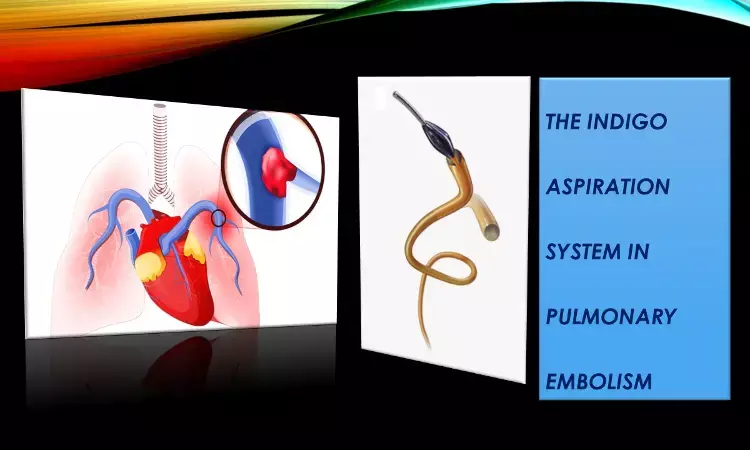- Home
- Medical news & Guidelines
- Anesthesiology
- Cardiology and CTVS
- Critical Care
- Dentistry
- Dermatology
- Diabetes and Endocrinology
- ENT
- Gastroenterology
- Medicine
- Nephrology
- Neurology
- Obstretics-Gynaecology
- Oncology
- Ophthalmology
- Orthopaedics
- Pediatrics-Neonatology
- Psychiatry
- Pulmonology
- Radiology
- Surgery
- Urology
- Laboratory Medicine
- Diet
- Nursing
- Paramedical
- Physiotherapy
- Health news
- Fact Check
- Bone Health Fact Check
- Brain Health Fact Check
- Cancer Related Fact Check
- Child Care Fact Check
- Dental and oral health fact check
- Diabetes and metabolic health fact check
- Diet and Nutrition Fact Check
- Eye and ENT Care Fact Check
- Fitness fact check
- Gut health fact check
- Heart health fact check
- Kidney health fact check
- Medical education fact check
- Men's health fact check
- Respiratory fact check
- Skin and hair care fact check
- Vaccine and Immunization fact check
- Women's health fact check
- AYUSH
- State News
- Andaman and Nicobar Islands
- Andhra Pradesh
- Arunachal Pradesh
- Assam
- Bihar
- Chandigarh
- Chattisgarh
- Dadra and Nagar Haveli
- Daman and Diu
- Delhi
- Goa
- Gujarat
- Haryana
- Himachal Pradesh
- Jammu & Kashmir
- Jharkhand
- Karnataka
- Kerala
- Ladakh
- Lakshadweep
- Madhya Pradesh
- Maharashtra
- Manipur
- Meghalaya
- Mizoram
- Nagaland
- Odisha
- Puducherry
- Punjab
- Rajasthan
- Sikkim
- Tamil Nadu
- Telangana
- Tripura
- Uttar Pradesh
- Uttrakhand
- West Bengal
- Medical Education
- Industry
Indigo aspiration system shows promising results for pulmonary embolism: EXTRACT-PE Trial

Management of sub-massive pulmonary embolism (PE), defined by normal blood pressure but right ventricular (RV) dysfunction, is marred by uncertainty. Systemic thrombolysis, the most extensively studied active thrombus treatment strategy, carries a high risk of major bleeding (approx. 7%). Catheter-directed thrombolysis and percutaneous mechanical aspiration have been developed to counter the bleeding risks of systemic thrombolysis. EXTRACT-PE trial published in JACC interventions evaluated the safety and efficacy of the Indigo aspiration system without thrombolytic drugs for the treatment of submassive PE and reported successful outcomes with lower bleeding risk.
In a prospective, single-arm, multicenter study that enrolled patients with symptomatic acute PE ≤ 14 days, systolic blood pressure ≥ 90 mm Hg, and right ventricular-to-left ventricular (RV/LV) ratio >0.9. The primary efficacy endpoint was change in RV/LV ratio from baseline to 48 h post-procedure on core lab–adjudicated computed tomography angiography.
The primary safety endpoint was a composite of 48-h major adverse events: device-related death, major bleeding, and device-related serious adverse events (clinical deterioration, pulmonary vascular, or cardiac injury).
Median device insertion to removal time was 37.0 (interquartile range: 23.5 to 60.0) min. Two (1.7%) patients received intraprocedural thrombolytics. Mean RV/LV ratio reduction from baseline to 48 h post-procedure was 0.43 (95% confidence interval: 0.38 to 0.47; p < 0.0001). Two (1.7%) patients experienced 3 major adverse events. Rates of cardiac injury, pulmonary vascular injury, clinical deterioration, major bleeding, and device-related death at 48 h were 0%, 1.7%, 1.7%, 1.7%, and 0.8%, respectively. The rate of major bleeding was 1.7%, and there were no hemorrhagic strokes. Of note, 89.6% of patients had a reduction in RV/LV ratio without an adverse event related to the device, major bleeding, PE-related death, or clinical deterioration.
"Interestingly, we found a 37-minute Indigo procedure time and an on-table pulmonary-artery pressure reduction, which speak to the promise of this technique. [As well,] intraprocedural thrombolytic drugs were not used in 98.3% of patients," said Akhilesh Sista, MD, from the New York University, lead author of the article.
Indigo has an 8 French lumen and tip directionality for circumferential aspiration. There are also multiple material transitions which allow for smooth tracking and a separator technology at the tip, "which serves to both engage the clot and clear the lumen when a clot enters the mouth of the catheter," Dr. Sista added.
EXTRACT-PE is the first prospective trial of the Indigo aspiration system for acute PE. The trial reported significant improvement in RV function, low rates of mortality, low events of major bleeding, no cardiac injury, and fast procedure times.
Thrombectomy with the Indigo aspiration system met its predefined safety and efficacy endpoints for the treatment of acute PE and may be considered by endovascular physicians for use in intermediate risk PE.
Source: JACC interventions. J Am Coll Cardiol Cardiovasc Interv. Jan 13, 2021. Epublished DOI: 10.1016/j.jcin.2020.09.053
MBBS, MD , DM Cardiology
Dr Abhimanyu Uppal completed his M. B. B. S and M. D. in internal medicine from the SMS Medical College in Jaipur. He got selected for D. M. Cardiology course in the prestigious G. B. Pant Institute, New Delhi in 2017. After completing his D. M. Degree he continues to work as Post DM senior resident in G. B. pant hospital. He is actively involved in various research activities of the department and has assisted and performed a multitude of cardiac procedures under the guidance of esteemed faculty of this Institute. He can be contacted at editorial@medicaldialogues.in.
Dr Kamal Kant Kohli-MBBS, DTCD- a chest specialist with more than 30 years of practice and a flair for writing clinical articles, Dr Kamal Kant Kohli joined Medical Dialogues as a Chief Editor of Medical News. Besides writing articles, as an editor, he proofreads and verifies all the medical content published on Medical Dialogues including those coming from journals, studies,medical conferences,guidelines etc. Email: drkohli@medicaldialogues.in. Contact no. 011-43720751


